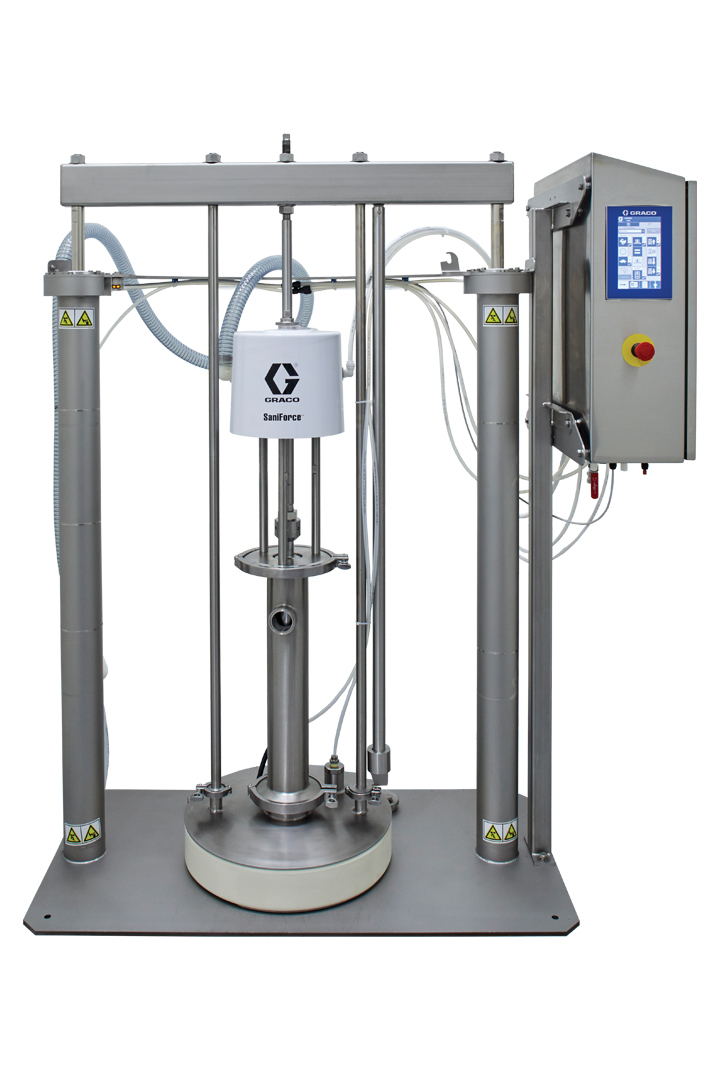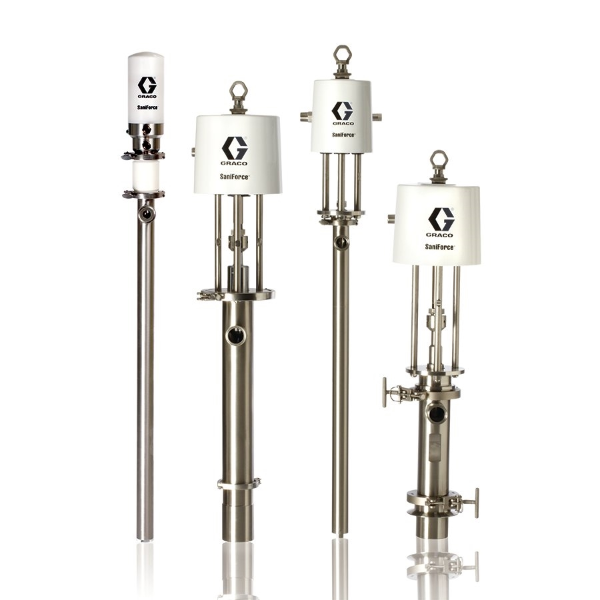SANITARY DRUM UNLOADING SYSTEMS CAN BE LIFESAVERS
Manual methods of drum unloading can be tedious, time-consuming, conducive to spreading bacteria and downright dangerous to employees. Automating drum unloading makes the process a lot safer.
Today, drum unloading is often a manual process. In one method, someone scoops product out of a drum, which can be very unsanitary. Another method is chaining or clamping the drum, raising it and then dumping the product into a kettle or hopper, which can be an accident waiting to happen. Afterwards, workers spray water to evacuate the residual material from the bottom and sides of the drum. These processes can be hazardous because they can potentially cause employee injury and affect food safety. Installing a drum unloading system can help to prevent both of these issues within a processing facility.
Drum unloaders provide a safer way of emptying the drum’s contents. They are best suited for unloading highly viscous materials, and can also transfer tomato pastes and peanut butters, oils and syrups.
The typical evacuation time for a drum unloader is about five minutes vs. comparable manual processes that can take 30 minutes or more. Also, with manual processes, when water is introduced to the material, it typically needs to be removed at a later part in the process, which takes more time and can introduce contaminants into the product.
The drum unloader reduces residual product left in the bottom and sides of the drum. A high-performance drum unloader with an inflatable wiper seal will leave less than 1 percent residual product remaining in the bottom of the drum.
Pumps are a key part of the unloading system. One of the most common pumps on a drum unloader is a sanitary, air-operated double-diaphragm pump. A diaphragm pump unloading system can move materials with viscosities up to 100,000 cps. Typical materials a diaphragm pump unloader can handle are fruit juice concentrates, salad dressings, condiments and sauces.
For unloading materials with viscosities greater than 100,000 cps, one method is to use a sanitary piston pump on a drum unloader. Piston pumps are capable of higher pressures to move high-viscosity materials longer distances. Piston pumps come in ratios. For example, a 12:1 piston pump provides an outlet fluid pressure 12 times the pressure of the inlet air, up to 1,200 psi. This outlet fluid pressure coupled with the down pressure of the drum unloader’s ram plate allows the processor to unload highly viscous materials like peanut butter and caramel, applications that would be very difficult with a double-diaphragm pump.
To achieve greater than 99 percent evacuation rates, an inflatable wiper seal is installed on the ram plate. After the ram plate and seal enter the drum, the user flips a switch, which inflates the seal to the appropriate pressure. The seal holds this pressure and gently scrapes the side of the drum as the ram plate moves from top to bottom.
Processors need equipment that is easy to take apart, clean and put back together. Quick-disconnect clamps are replacing bolted designs. Easy-to-repair air valves are replacing air valves with 30 or more parts, and PTFE over-molded diaphragms are replacing diaphragms with an exposed fluid-side diaphragm plate. PTFE diaphragms eliminate the potential for bacteria to harbor between the fluid-side diaphragm plate and the diaphragm. All design features that ease the cleanability of the unit.
Strides have also been made on the control options. A wide range of control options is available, from exposed manual controls to fully automated LED control systems, via a touchscreen control panel. Capabilities include a fully automated unloading sequence, ingredient/recipe storage, pump prime feature, output control and ram jog feature; all to remove unnecessary processor interaction and to automate the unloading process.
Often, drums are different sizes and shapes. Ingredient suppliers are constantly changing the size and shape of their drums, from conical to straight-sided. Be sure to purchase unloaders that are future proof and can adapt to various sizes and shapes, especially if a drum resembles more of a cone than a cylinder. Finally, a drum unloader can be a big investment, but it can pay off in less than a year through labor savings, employee safety and food safety.

Related Articles
Drum unloader speeds up process for baby food manufacturer
A worldwide manufacturer of baby food products, located in central Mexico, needed to find a more efficient and cost-effective way to quickly unload drums of highly viscous apple paste.
Why invest in a Sanitary Drum Unloading System?
Drum unloaders are an ideal solution for highly viscous, difficult-to-transfer materials. They can move tomato pastes, peanut butter, personal care products and cosmetics.
Céréco improves the unloading of its fillings
The specialist producer of co-extruded organic breakfast cereal ranges for children has changed to a larger drum packaging format for its fillings.






